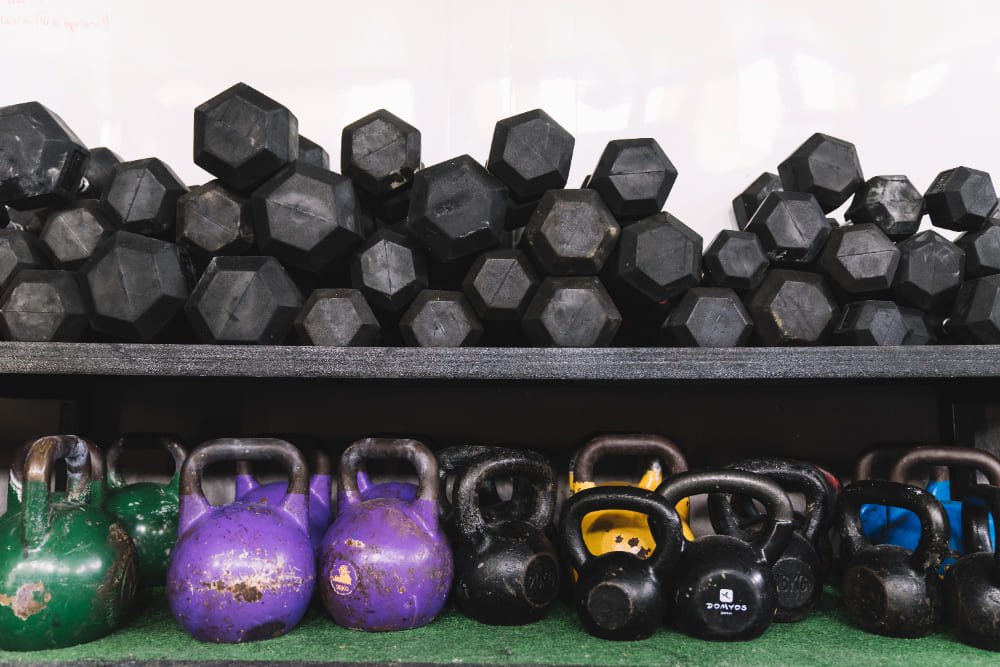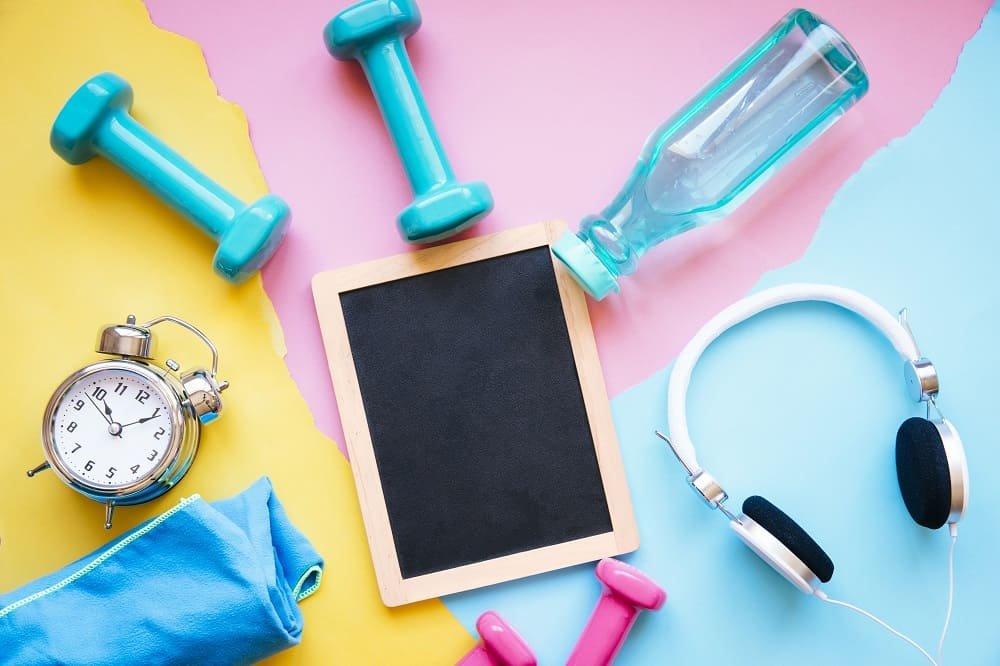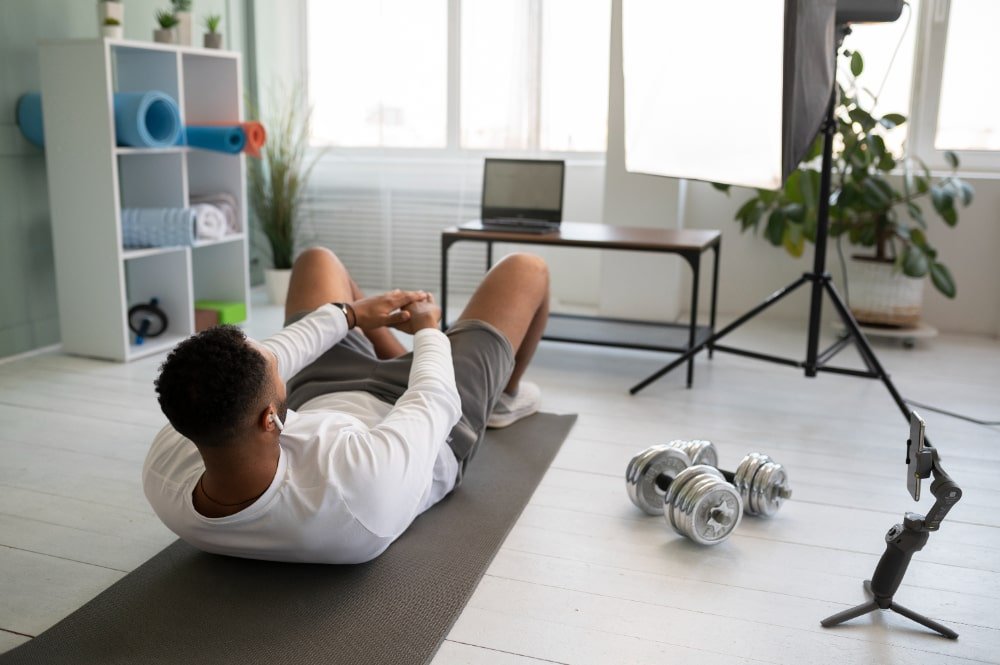Are you tired of paying for expensive gym memberships or dealing with the hassle of traveling to a gym every day? What if I told you that reaching your fitness goals and setting up a home gym doesn’t have to break the bank? With a little bit of creativity and planning, you can create your own home gym without breaking the bank.
Many people think that setting up a home gym is only for the wealthy or those with a lot of space in their homes. But you don’t need a lot of money or space to create a functional and effective home gym. You just need to be smart with your choices and prioritize what’s most important for your fitness routine.
To help you get started, here are some tips and ideas on how to best Home Gym Setup on a Budget.
Assess Your Space
The first step to creating an affordable home gym is evaluating the space you have available. This will help you determine what equipment and exercises can be incorporated into your setup. You don’t need a lot of space to create a home gym, but you should have enough room for at least a yoga mat or a set of dumbbells.
If you have an extra room or basement that’s not being used, that would be the ideal space for your home gym. However, if you don’t have an extra room, you can still make it work in a corner of your bedroom or living room. Just make sure to measure the space and plan accordingly.


Invest in Multi-functional Equipment
One of the best ways to save money when setting up a home gym is by investing in multi-functional equipment. This means choosing equipment that can be used for various exercises instead of buying separate machines for each exercise.
For example, a set of resistance bands can be used for strength training, stretching, and even cardio exercises. A stability ball is another great multi-functional equipment that can be used for core exercises, balance training, and more. These types of equipment are not only cost-effective but also take up less space in your home gym.


Stick to the Basics
When it comes to setting up a home gym on a budget, it’s important to stick to the basics. You don’t need fancy equipment or expensive machines to get a good workout. Instead, focus on the essentials that will provide you with a variety of exercises and target different muscle groups.
Some basic equipment you can include in your home gym are:
- Dumbbells
- Kettlebells
- Jump rope
- Resistance bands
- Yoga mat
- Pull-up bar
These items are relatively inexpensive and can provide you with a full-body workout. You can also add more equipment as your budget allows, but the key is to start with the essentials.


Get Creative with Household Items
Don’t be afraid to get creative and use household items in your home gym setup. Yes, you read that right – everyday items found in your home can double as exercise equipment. For example, a chair or sturdy coffee table can be used for tricep dips. You can also use water bottles or cans as weights for arm exercises.
Using household items not only helps save money but also adds variety to your workout routine. Just make sure to use items that are safe and won’t cause injury.


Utilize Bodyweight Exercises
Bodyweight exercises are a great addition to any home gym setup, and they require little to no equipment. These exercises use your own body weight as resistance, making them perfect for a budget-friendly workout.
Some popular bodyweight exercises include:
- Push-ups
- Squats
- Lunges
- Planks
- Burpees
These exercises can be modified to suit different fitness levels, and you can easily find tutorials and variations online. They are also great for targeting multiple muscle groups at once.


Consider Second-hand Equipment
If you have some specific equipment in mind that you want for your home gym, consider buying second-hand. Many people sell their lightly used fitness equipment at a lower price, which can be a great option for those on a budget.
You can check online marketplaces like Craigslist or Facebook Marketplace for deals on used equipment. Just make sure to thoroughly inspect the items before making a purchase and negotiate the price if needed.


Don’t Forget about Safety
No matter how tight your budget is, safety should always be a top priority when setting up a home gym. Make sure to invest in proper footwear and clothing for your workouts. Also, consider purchasing a workout mat to prevent slips and protect your floors.
It’s also important to properly set up and secure any equipment you have to avoid accidents. If you’re unsure about how to use a particular piece of equipment, do some research or consult a professional. I recommend having a first-aid kit on hand as well, just in case.
Make it Your Own
Make your home gym a place that you enjoy being in. Add some motivational posters or quotes to the walls, play your favorite music while working out, and keep it organized and clean.
When you have a space that inspires you and is tailored to your preferences, you’ll be more likely to stick with your fitness routine. I’m telling you, working out at home can be just as effective and enjoyable as going to a gym. Also, you’ll have the added convenience of being able to work out whenever you want.
Some Helpful Tips
Set Clear Goals
Before you start working out at home, define your fitness goals. Whether you want to build strength, lose weight, improve flexibility, or simply stay active, having clear goals will help you stay motivated and focused.
Create a Schedule
Just like going to a gym, it’s important to carve out specific times for your workouts. Establish a routine that works with your daily schedule, and stick to it as consistently as possible.
Warm Up and Cool Down
Always start your workouts with a proper warm-up to prepare your body for the exercises and reduce the risk of injury. Similarly, cool down afterward with stretches to help your body recover and prevent stiffness.
Track Your Progress
Keep a journal or use fitness apps to track your workouts and monitor your progress. Seeing how far you’ve come can be incredibly motivating and help you identify areas where you may want to improve.
Stay Hydrated
Hydration is key to performing well during your workouts. Keep a water bottle nearby and drink plenty of water before, during, and after your exercise sessions.
Mix It Up
Prevent boredom and keep your body challenged by varying your workout routine. Incorporating new exercises, trying out fitness videos online, or switching up your schedule can make a big difference.
Rest and Recover
Allow your body time to recover by including rest days in your workout plan. This is just as important as the workout itself, as it helps prevent overtraining and allows your muscles to rebuild and strengthen.
Stay Positive
Working out at home can be challenging at times, but maintaining a positive mindset will help you stay consistent. Focus on your progress and celebrate small achievements to keep yourself motivated.
By applying these tips, you’ll maximize the benefits of your home gym and stay on track with your fitness goals.
Bottom Line: It’s All About Adaptability
Having a home gym doesn’t mean you have to break the bank. With some creativity and resourcefulness, you can create a budget-friendly setup that meets your fitness needs. If you’re willing to put in the effort and stay adaptable, working out from home can be just as effective and enjoyable as going to a gym.
FAQs About Home Gym Setup on a Budget
What are the essential items I need for a home gym setup?
Some essential items include a set of dumbbells, resistance bands, and a workout mat. You can also get creative and use household items like chairs or water bottles as exercise equipment.
Can bodyweight exercises be effective for building strength?
Absolutely! Bodyweight exercises use your own body weight as resistance and can target multiple muscle groups at once. They are also easily modified to suit different fitness levels.
Is it safe to buy second-hand equipment for my home gym?
As long as you thoroughly inspect the items and negotiate the price if needed, buying second-hand equipment can be a budget-friendly option. Just make sure to set it up and secure it properly for safety.
Do I need to follow a specific workout routine at home?
It’s important to have a plan and goals in mind, but you can be flexible with your routine. Mix up your exercises, try out different fitness videos, and listen to your body’s needs.
How often should I rest between workouts?
It’s essential to include rest days in your workout schedule to allow your body time to recover and prevent overtraining. Aim for 1-2 rest days per week, depending on the intensity of your workouts.
